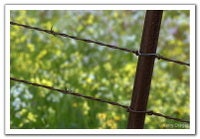Tip of the Day: Close-ups, Long Lenses and Depth of Field
The term is that you get more DOF with a small aperture (high f/number) than with a wide aperture (low f/number), but it's not always so simple! With DOF, lens focal length, distance to subject, and other elements also come into play.

An explaination of the components of Depth of Field, adapted from article by Kerry Drager on Betterphoto.com:
The term “Depth of Field” describes the range of sharpness in a scene that has depth (both a foreground and background). One “rule” is that you get more DOF with a small aperture (high f/number) than with a wide aperture (low f/number), but it’s not always so simple! With DOF, lens focal length, distance to subject, and other elements also come into play.
In fact, when shooting close-ups with a telephoto lens or a macro lens, it’s pretty much impossible to get both a close foreground and a relatively distant background sharp at the same time, even with the use of a high f/number.
More DOF Less DOF
In these images, I used a long telephoto lens and focused directly on the close-up fence post. I wanted to keep the fence post and some of the wire sharp, so I avoided a super-wide aperture (low f/number). I chose to “compromise” with two images – the same composition but with a high f/number and with a not-so-high f/number. With my DSLR, I previewed the DOF before shooting w via Depth of Field Preview. But if your digital camera doesn’t have this feature, no problem: You can check the LCD monitor after shooting.